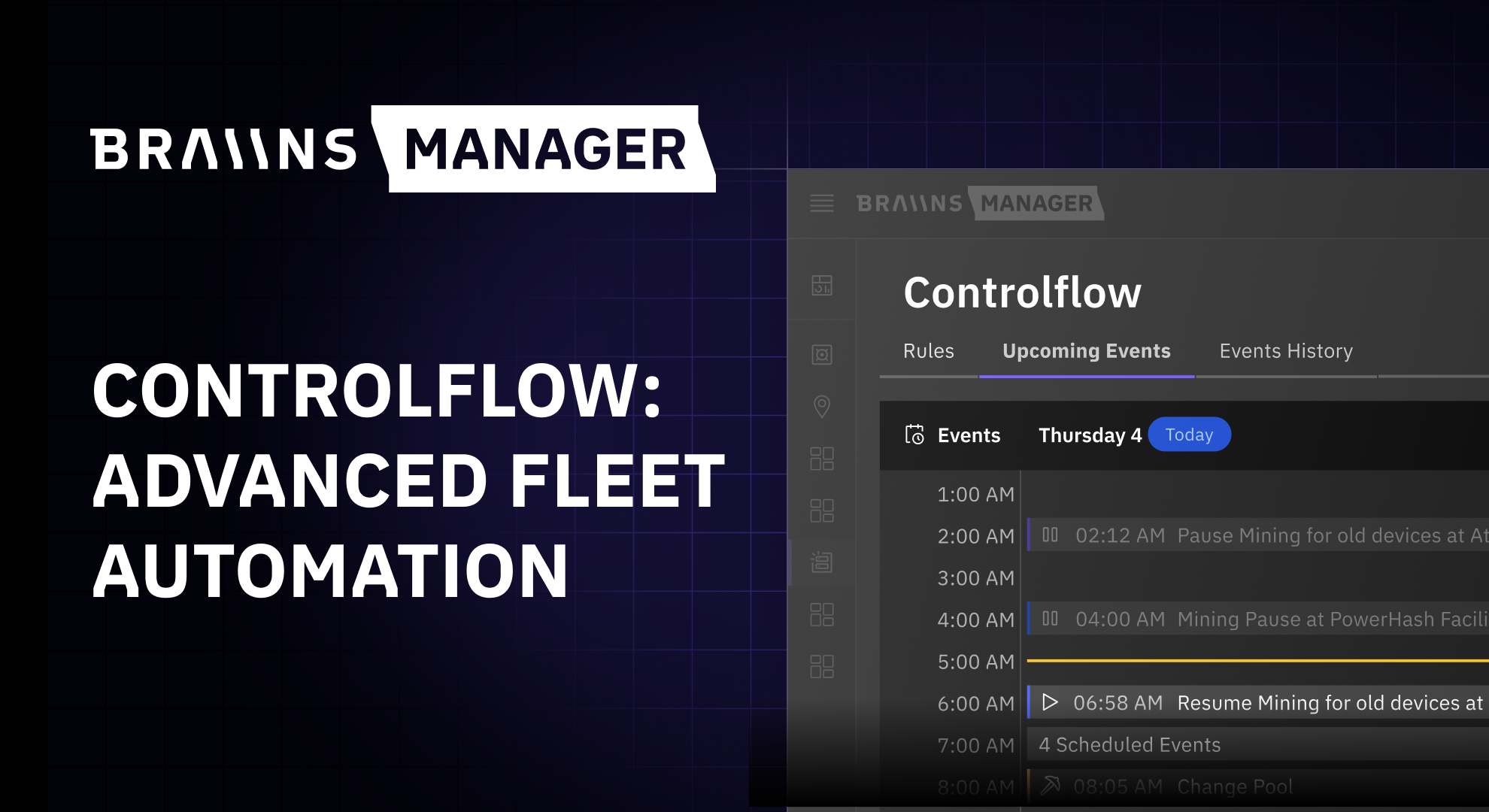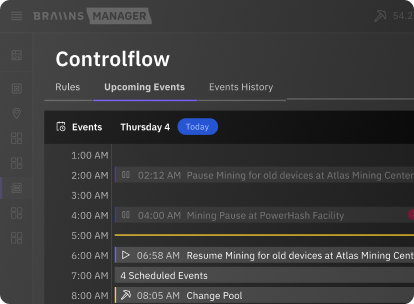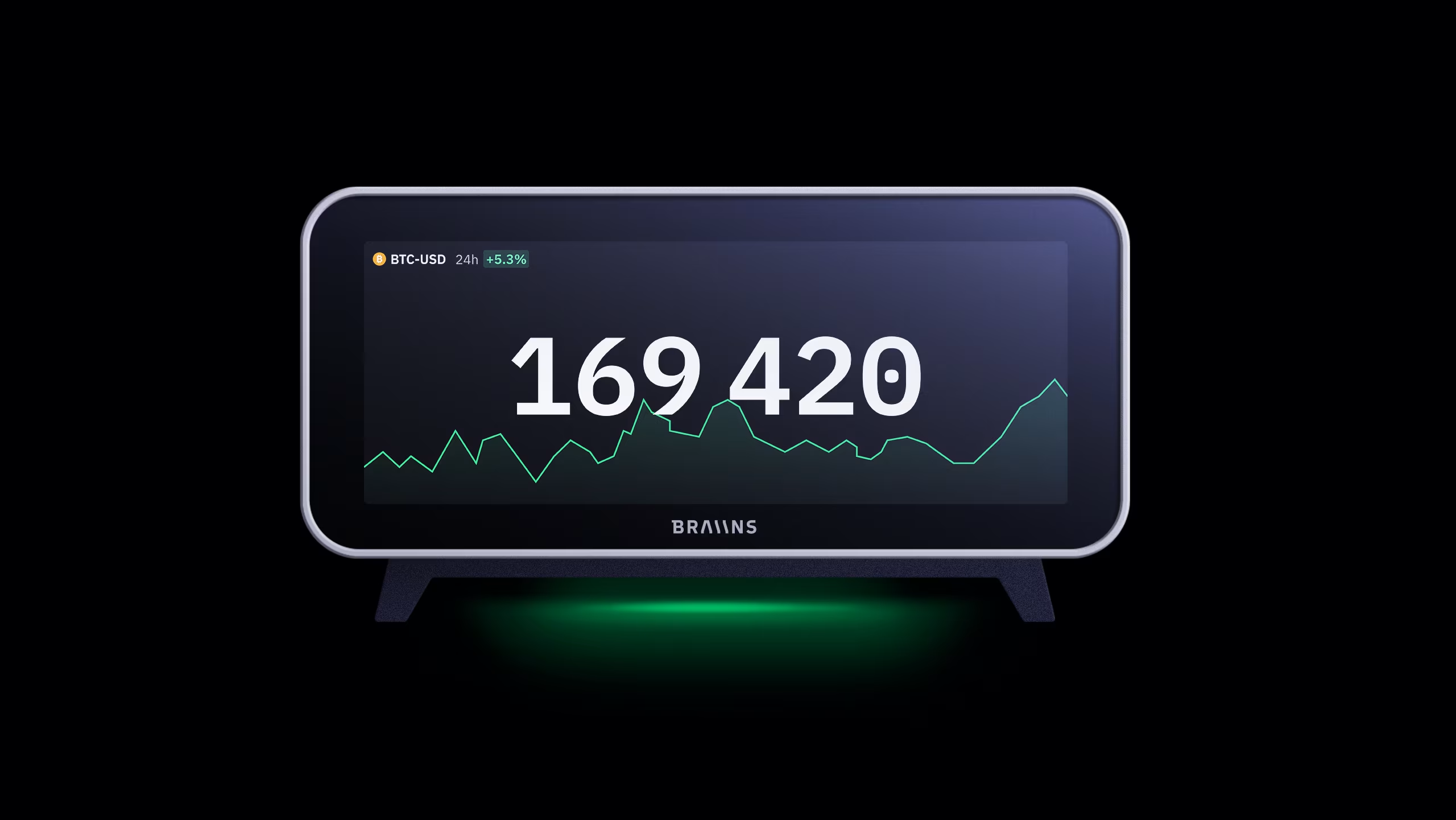The Basics of Building a Bitcoin Mining Greenhouse
Published
3.10.2022
Learn the first steps of planning and constructing a greenhouse heated by bitcoin mining heat exhaust in this high-level overview from a miner and farmer.

Table of Contents
This article shares the first-hand experience of Keirnan Wright, a home miner and tinkerer who mines bitcoin in conjunction with operating a greenhouse, and was written for the Braiins mining community. Learn more at bitcoingreenhouse.org.
A bitcoin miner provides two valuable things: heat and bitcoin. There are other benefits of combining the two, including learning new skills and acquiring knowledge in regard to growing and mining. I began mining in my greenhouse in 2020 after presenting a bitcoin mining exhibit that showcased a complete off-grid solar mining system with heat capture. I liked the idea of using bitcoin mining in combination with running a greenhouse to become more sovereign.
For reference, I use Antminer S9s (mining with Braiins Pool) in my greenhouse, and I’m currently working on a full-scale version of my initial project at bitcoingreenhouse.org. The first iteration I used ducting to move air from the miner around my greenhouse. The next iteration will use immersion and either a large tub of water or in floor radiant heating.
Heat reuse is fast becoming a popular focal point of the bitcoin mining industry, but its usefulness is not just for institutional miners. This article gives an overview of the basics needed to start planning and running a greenhouse garden heated by bitcoin mining.
Becoming a Miner-Gardener
Perhaps the most important question for a miner to ask themselves is, “What do I want to grow?” Consider the answer to this question personally and anyone else in the area.
Not only is the mining greenhouse a cool project, but it is also possible to become a “bitcoin food bank” of sorts for a neighborhood, assuming others may not have the means to grow food. And having a heated environment significantly expands the options for what can be grown. A miner can think about what they are buying generally in terms of produce, and then think of things they would want in the ideal situation, which could mean growing whatever produce costs the most in their food budget.
A mining greenhouse could also become a small entrepreneurial effort by being able to sell the produce at a farmers market (and accept bitcoin as payment.) Things like tomatoes and citrus fruits love warmth, and they require more of it than most other plants.
The Greenhouse Environment
It’s also important to create an ideal growing environment that is complemented not worsened by mining. That means reducing noise pollution and eliminating volatile temperature swings. Plants require soil, watering, light, and love. It won't matter how nice and toasty the greenhouse is if a plant’s foundational needs are not met. Good soil goes a long way, so a miner-gardener should consider doing some research on building good soils for their plants.
Healthy plants start with healthy soil. Keeping worms (vermicomposting) or other insects like lady beetles (“integrated pest management”) will complement the greenhouse environment. Miner-gardeners can feed their food waste to worms, and they will create worm castings, an ideal light food for plants that contains lots of nitrogen and is an excellent organic amendment for nutrient rich soil.
Introducing lady beetles to the green space is an excellent, though not a be all end all, form of integrated pest management. They feed on aphids, spider mites, spider mite larvae, thrip larvae and pupae, and other things. There are lots of places to get lady beetles when the season is right, as well as other beneficials that will help defend a greenhouse crop without having to use pesticides. Watering and irrigation can be automated and that includes fertilization.
Another consideration to keep in mind is the concept of agro voltaics. I recommend learning about this concept as it would allow the gardener to essentially turn their greenhouse into a power station. It could also help to offset any electricity costs while maximizing space. Direct sunlight to plants can actually slow their growth, and partial shading throughout the day will lead to greater yields.
Build a temple for the food, and treat it with respect. Be sure to diligently DYOR on all these things before diving in. Every greenhouse is unique, and this will help avoid creating something that is unsafe (environmentally or for consumption) to the operator or others.
The Greenhouse Structure
Greenhouses come in all shapes and sizes. Depending on where a particular miner is located geographically, more than one option will be viable. My greenhouse was constructed from almost entirely scrap lumber and used pallets. For new farmers looking to build their own, local mills normally have scrap piles where plenty of good lumber can be found. (For my greenhouse, the wood pallets we use were free from a corner store.)

Miners can also easily look up DIY greenhouses and pick a design they like. The internet is everyone’s friend for guides on building. Pinterest is a great app for inspiration for greenhouse designs. There are also many prefab greenhouses available for purchase. There is a balance between design and performance with greenhouses, it all depends how many sats the builder is willing to part with.
My greenhouse:
- Its dimensions are about 20 square meters.
- I use one (1) Antminer S9 to heat it.
- For insulation on the greenhouse, I use double walled poly, and material for greenhouses. (As an alternative, miners can also find used windows online or at garage sales.)
For my greenhouse, I needed basic tools like an electric screwdriver, level, hammer and nails, a saw, measuring tape, and a right angle. To conserve sats during the building process, a new miner-gardener might be able to borrow some tools from a tool shop and still build a sweet greenhouse.
The Bitcoin Mining Part
Once I had the greenhouse built, I placed the miner physically inside the greenhouse in a central location. The greenhouse has a back wall facing south in order to allow as much sunlight into the greenhouse. Generally, gardeners want their greenhouses to face the sun for maximum light. I used an aluminum tub from a fishing boat as the enclosure for the miner.
With mining, there are a few things to consider right away, and one of those is the noise. On stock settings an S9 is very loud – too loud to be close to for extended periods and probably way too loud for the plants. Apparently, plants are affected by both noise and emotion, so keeping their environment serene and quiet is important.
Miners can order aftermarket fans from Noctua that are silent. If a miner is using fans for cooling, think about how to feed the intake and what to do with the exhaust. In a greenhouse, air flow can be a good thing, so ideally the structure will have air intake from outside. It is essential to use an air filter on the intake because of bugs. It was also recommended to me to put the intake to the outside in a shaded place near the floor. For exhaust, miners will want to ensure that they are capturing the heat from the miner. This can be done with ducting and shrouds, which anyone can order from CryptoCloaks.
My miner is running Braiins firmware, and it’s set to run at 980W because it is much quieter and that number seems to be the sweet spot on S9s for output. TechEngineer on Twitter published this data on S9s:

It’s important to design an enclosure for the mining machine to protect it from the elements like moisture or dirt and debris in the greenhouse. Many guides for DIY mining enclosures exist. Here’s a list of some guides and products that I like.
The more advanced way to integrate miners into a greenhouse is immersion. Although this is more complicated and requires more material, it can be more efficient. Benefits of immersion are overclocking, reduced heat damage to chips, and silence. Immersion also gives the ability to create radiant in-floor or in-ground heating. Plants, just like people, enjoy having warm feet. Depending on what is growing and how the greenhouse is built, miners should take into consideration how they want to use the mining heat. These are some immersion examples and guides I like:
Depending on a miner’s setup, they will be able to create good airflow from fans. Moving air through the greenhouse has numerous benefits, so consider a fresh air intake and additional measures like fans for moving air out of the greenhouse. This will help with temperature control as well.
Mining Hardware for the Greenhouse
In the past I have used Kaboomracks for buying machines. They are super helpful, and I’ve had no issues with deliveries. At the time of writing, the market prices for machines are very cheap. For anyone just getting started, I recommend getting an S9. Shoppers can probably find one for less than $200. Of course, if a miner is ready to go for something more powerful, S19s are around $3000 at the time of writing. Machine choice depends on how much heat the gardener wants or needs relative to the size of their greenhouse space.
ASIC mining machines are outputting a 1-to-1 ratio of watts to heat. Newer miners are more efficient on a watts per terahash basis, but they require more sophisticated power. In terms of power, unless the miner is absolutely confident in their skills or is certified, I highly recommend consulting an electrician as they build their greenhouse. It could really avoid a lot of serious electrical problems down the line. Also, as most miners know, an S9 can be plugged into a regular wall outlet, but bigger machines require 240V, so make sure to consider the power situation when planning and building a greenhouse.
Greenhouse Heat Management
While a mining machine is running, it will obviously be producing heat, and it is important to consider the plants that are growing and their needs. Generally, plants enjoy cooler temperatures at night and warmth during the day. There are tools to control temperature in greenhouses from joints that will open based on temperature to thermostat control systems. Depending on a miner’s power situation, it may be cheaper to mine at certain times of day so consider this when planning. Timers work well as well as more advanced tools like PDUs.
A greenhouse gardener doesn’t want their environment to become too warm otherwise it will harm the plants. Passive heating through the day will ensure an ideal growing environment. Most importantly, a gardener doesn’t want their plants to become too cold or suffer a shock of some kind as it will stress them out. In this sense, automation may be a miner’s best friend to keep a steady environment for growing.
Mining in a greenhouse needs to be done harmoniously. One option for this is essentially using a pool of water as a heat bank that is heated up by your miners. Coin Heated on Twitter used a pool for dumping the heat from his immersion setup, and this is a possible solution for greenhouses.
Be prepared to vent heat away from the greenhouse if maximizing uptime is a goal. Utilizing cold air intake would be the best option, as cold air will hold more moisture and make humidity/temperature regulation more controlled. Another symptom of having the growing space get too hot (either indoor or out) is that it will kill the beneficial microorganisms and nematodes that coexist in the soil naturally will begin to die off (usually in about the 30-32 degree range).
Greenhouse Ventilation Management
A greenhouse gardener will want to have – one way or another – good air movement and circulation to control the relative humidity in their green space. This is important for reasons ranging from humidity control for the miner to making sure the environment doesn’t become adverse for the plants themselves, because not everything likes high humidity environments. This can be done using vent fans, like the cloudline T6 and S6. This 6 inch combo can recycle roughly 200 sq/ft of air space in about 60 seconds. It also has the added benefit of coming with a temperature/relative humidity sensor that will control the duct fans, box fan, or oscillating fan.
Air movement will be the greenhouse miner’s friend regardless of the method or environment that the mining machine runs in. Fruiting and flowering plants will also be thankful, as it will help to avoid things like blossom end rot.
The link to can filters (see below) will help to establish the square footage of the green space. Establishing the size of a miner’s space is absolutely crucial to having the appropriate air movement for the space, whether it is a true indoor or outdoor greenhouse setup. Utilizing this link, and the information held within, will help a new gardener to understand how to properly place and implement intake and exhaust air flow – link to filter calculator.
General Precautions
The most important precautions to take relate to wiring and fire prevention. Consulting an electrician is important to make sure a novice greenhouse miner has a proper setup. Mining machines are running a constant load, which creates heat in the wires. Having the proper gauge of wire is crucial to prevent a fire. A gardener will want to think about the enclosure they are using for their machines and how well it could prevent a fire.
One thing that I have been looking into is using hempcrete, a material made from the hemp plant that is non flammable. Using one of the many open source guides for building miner enclosures, a miner can substitute hempcrete in the enclosure’s construction. This is what I am planning to do for the future–just an idea I wanted to share here.
A miner can also include fire detection equipment and sensors, but the first and most important step is to have someone who is certified double check the electrical and other structural work. A gardening miner wants to be sure that they do not overheat their greenhouse and literally cook the plants. Proper ventilation and heat control is crucial to the long term success of the greenhouse.
Both Raspberry Pi and Arduino offer environmental sensor and control packages to be able to control a green space’s temperature more precisely and, ultimately, safely. Don’t underestimate the importance of being able to control the heat, ventilation, and relative humidity of the greenhouse environment. At the end of the day these aspects are crucial to clean and smooth operation of the components within the miner, as well as the green space.
This article shares the first-hand experience of Keirnan Wright, a home miner and tinkerer who mines bitcoin in conjunction with operating a greenhouse, and was written for the Braiins mining community. Learn more at bitcoingreenhouse.org.
Categories
Be the first to know!
Read Privacy Policy.
Most Recent Articles
.png)
The Best Bitcoin Conferences & Events of 2026
29.12.2025

Introducing Controlflow: Advanced Automation in Braiins Manager
9.12.2025



